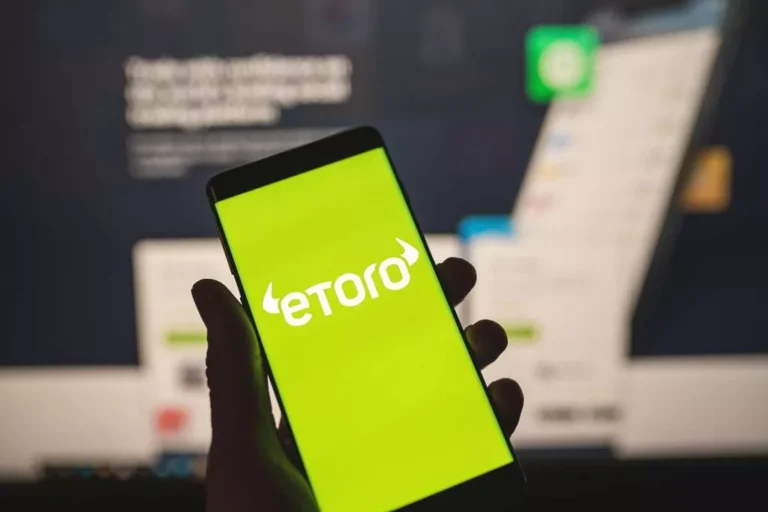Participating in these liquidity swimming pools (LPs) could be very simple as it involves depositing your belongings into a standard pool referred to as a liquidity pool. The course of is just like sending cryptocurrency from one pockets to another. A liquidity pool typically consists of a buying and selling pair such as ETH/USDT. As a liquidity miner (or provider), an investor may opt to deposit either asset into the pool. The DeFi liquidity mining space is abundant with this type of staking or farming opportunity, and more pools and protocols emerge by the day.
Crypto yield farming is an emerging sector of DeFi that allows you to earn rewards and interest on your crypto. Don’t put all of your eggs in one basket; manage your threat by diversifying your pool choice. This can reduce the impact if a project fails or a crypto asset considerably devalues. You may also be capable of broaden your passive income channels by doing this. Ensure you research and thoroughly pick the pool you’re depositing to.
In the tip, the attacker sells the token at a better trade price. His (or her) objective is to extend the trade price on a given token buying and selling pair (i.e.XYZ / ETH). Such moments sometimes appear in historical past, particularly when the recession is around the nook. That is why it’s value understanding how the liquidity mechanism works to prepare for a price crash potentially. At some level, customers will spot this chance and will begin swapping strawberries for lemons as they’ve become extremely low cost.
The Principle Drawback Of Yield Farming & Liquidity Mining
Please note that our Terms and Conditions, Privacy Policy, and Disclaimers have been up to date. Another factor you should keep in mind is smart contract danger and front running. Smart contract danger is less of an issue on the customer and vendor side, as many DApps are open supply. As for entrance operating, and generally any MEV attacks, you probably can change the RPC supplier in your wallet for MEV protection. For liquidity pools, the quick pricing of every asset is decided by the ratio between the two property involved somewhat than a currency.

Uniswap is a decentralized change protocol that allows users to swap tokens without intermediaries. Launched in November 2018, Uniswap was one of many first decentralized exchanges to realize important traction within the DeFi house. The platform is built on prime of the Ethereum blockchain and utilizes an automated market maker (AMM) mechanism to discover out token costs. If you want to reduce the danger of impermanent loss, then consider offering liquidity to swimming pools with steady property (low volatility). Liquidity swimming pools like USDT/USDC or DAI/USDT would expertise little to no impermanent loss.
How A Lot Money Are You Capable To Make From Liquidity Mining?
However, whereas crypto yield farming is typically extra worthwhile than staking, it’s also riskier. For example, when yield farming on Ethereum, the network fuel fees required to gather rewards can reduce earnings from APY charges. In addition, if the market becomes risky in either direction, impermanent loss can happen and drastically cut back profitability. This is when the value of tokens held in an algorithmically balanced liquidity pool lose worth relative to belongings in the open market. Finally, as a outcome of liquidity swimming pools use good contracts, there’s additionally an opportunity hackers may find and exploit vulnerabilities in the underlying code.
We need to set a relentless worth that determines the steadiness between each currencies. However, most simply match trades between patrons and sellers through an order book mechanism. Platforms like Aave and Compound use liquidity swimming pools to facilitate borrowing and lending activities.
Some exchanges might supply yields of up to 300%; however, they might not have the greatest popularity. The reality is, so lengthy as you give the tokens as rewards, you’ll have liquidity providers with you. When the financial incentive (in the form of tokens) is gone, the liquidity suppliers are additionally gone. In our lemons and strawberries example, Carly sells one lemon for 5 strawberries. Now, the balance has shifted towards one hundred and one lemons and 495 strawberries. The good contract will regulate the value, so the worth of every pool is equal.
Is Offering Liquidity Profitable?
Doing so permits liquidity providers to collective incentive rewards and trading fees without exposing themselves to the danger of price volatility. Although yield farming and staking crypto are two completely different practices, some mistakenly refer to them interchangeably. Yield farming — or liquidity mining — is a technique of generating rewards with cryptocurrency holdings.
- With limit orders, the trades solely execute when the price for a purchase order matches a promote order.
- Each kind of transaction or in-protocol operation has guidelines that, at the end of the day, regulate the token ratio in the swimming pools and provide the correct functioning of the market.
- Although some exchanges allows you to create swimming pools with single sided liquidity.
- Strategies to mitigate impermanent loss, similar to dynamic fee structures and hedging mechanisms, are actively being explored by DeFi developers.
- Some founders nonetheless do not understand how low liquidity can negatively affect the value of their token.
- Moreover, liquidity mining incentivizes customers to contribute to the growth and growth of DeFi protocols.
While this program has gained attention, it’s necessary to grasp what liquidity mining is and its advantages and disadvantages. All three methods – staking, yield farming, and liquidity mining – are simply ways to place investor’s crypto-assets to use and earn a passive earnings. Looking ahead, the future of liquidity pools and DeFi seems promising, with continued innovation and adoption driving development within the ecosystem. Furthermore, the rise of decentralized autonomous organizations (DAOs) has enabled group governance of liquidity pools.
How Does Liquidity Mining Work?
Be cautious when using lesser-known platforms or liquidity swimming pools with extraordinarily excessive Annual Percentage Yields (APYs). This poses the chance of unhealthy actors executing rug pulls, the place a project will increase some huge cash earlier than shutting down the project prematurely. In liquidity mining, the platform will rug-pull clients by taking all the deposited crypto property, leaving them with the now worthless liquidity tokens. Coinbase has removed a quantity of rug pulls from its platform through the years.
For example, in case you are making a WBTC/ETH liquidity pool, then you must lock up equal values of WBTC and ETH. Zerion is a portfolio administration dashboard for DeFi buyers that lets you access all your property and investments in one place. The data on this website is for instructional purposes only, and investing carries dangers. Always do your analysis before investing, and be prepared for potential losses. Liquidity mining has often been in comparability with staking and yield mining, which both allow you to generate passive earnings out of your tokens however differ in necessary methods.
The Crypto Yield Farming Ecosystem
Meanwhile, transaction charges generated from trades incentivize customers to contribute to the pool, making a self-sustaining ecosystem. Creating a liquidity pool involves organising a sensible contract that defines the principles for buying and selling, fees, and other features https://www.xcritical.com/. The alternative of which tokens to pair and how to balance them requires careful consideration to make sure the pool operates pretty and securely. Automated Market Making (AMM) is another cornerstone of liquidity pools.

The platform helps Ethereum and ERC-20 tokens (only Ethereum-hosted assets). The extra an LP contributes towards a liquidity pool, the larger the share of the rewards they will obtain. Different platforms have varying implementations, however this is the essential liquidity mining crypto idea behind liquidity mining. However, the use of the term mining on this title alludes to the thought that these liquidity providers (LPs) are in search of some rewards – charges and/or tokens – for his or her efforts.

1inch is a decentralized change (DEX) aggregator that helps customers find the best costs for trades across multiple DEXs. Launched in 2019, 1inch has quickly become one of the in style DEX aggregators within the DeFi house. SushiSwap is another decentralized change that was created as a fork of Uniswap in August 2020. It aims to enhance upon the original Uniswap model by introducing additional features, similar to a governance token and incentives for liquidity providers. Balancer is another Ethereum-focused decentralized change giving UniSwap a run for its money. It is arguably the most effective alternative to UniSwap out there, offering better terms for both liquidity providers and traders alike.
The profitability can be affected by market conditions, similar to volatility. As a result, you will want a method to take revenue with out immediately removing your tokens (the base and quote tokens) from the pool, as some swimming pools could have lock-up durations. Different DEXs might cost a set buying and selling charge on all orders distributed to the LPs. For instance, Uniswap has a zero.3% trading fee, whereas PancakeSwap has a zero.25% trading fee. For example, fixed belongings (e.g., real estate) are highly illiquid.
As such, liquidity is derived from the ecosystem through liquidity mining and never any central celebration. Now that we’ve answered the key query of what liquidity mining is let’s look at the method it works. In decentralized finance (DeFi), liquidity mining allows crypto holders to actively take part in the ecosystem whereas simultaneously incomes rewards. Later, we had Compound, which is a protocol that started to distribute COMP tokens to liquidity providers.
